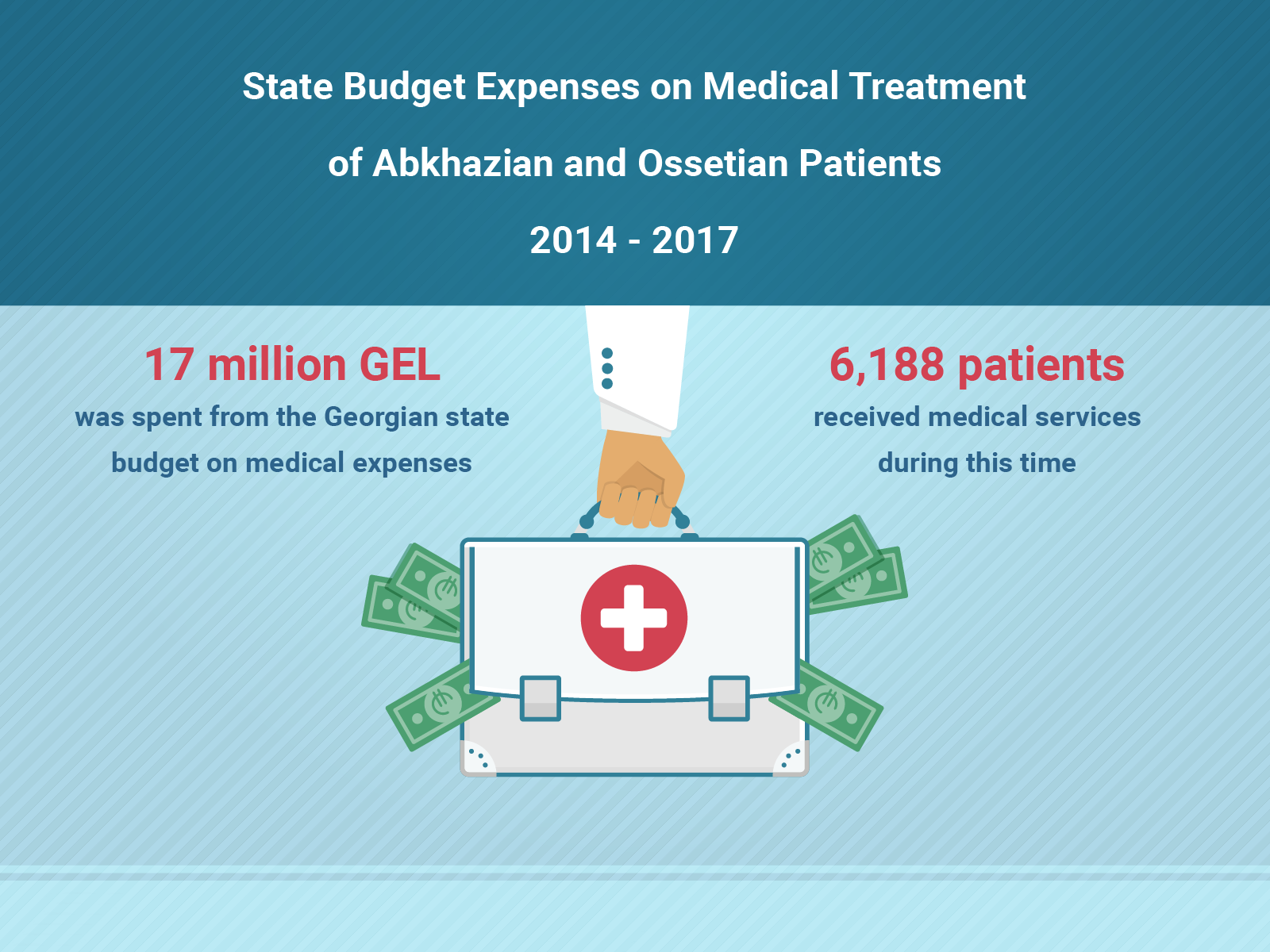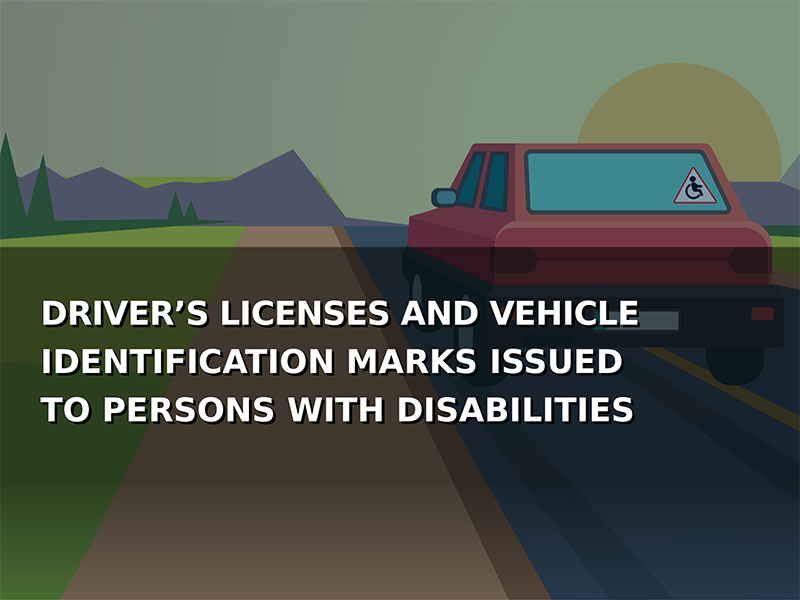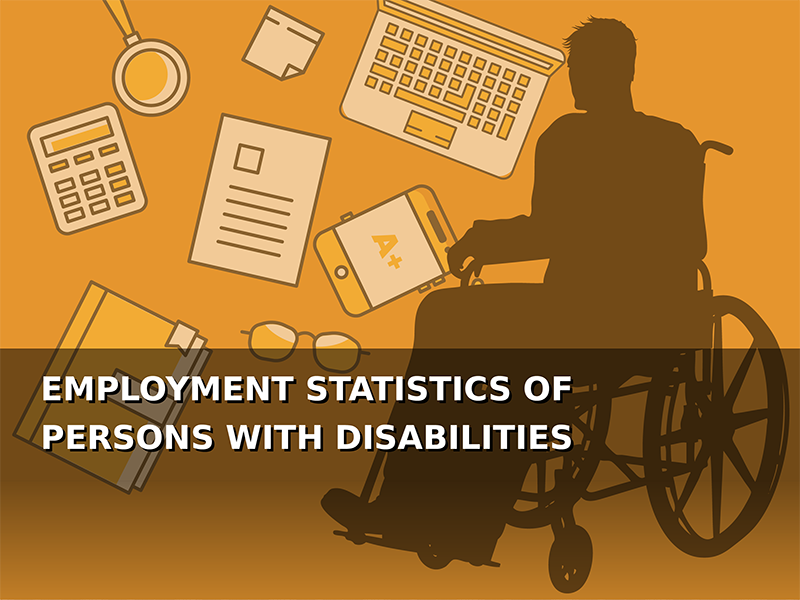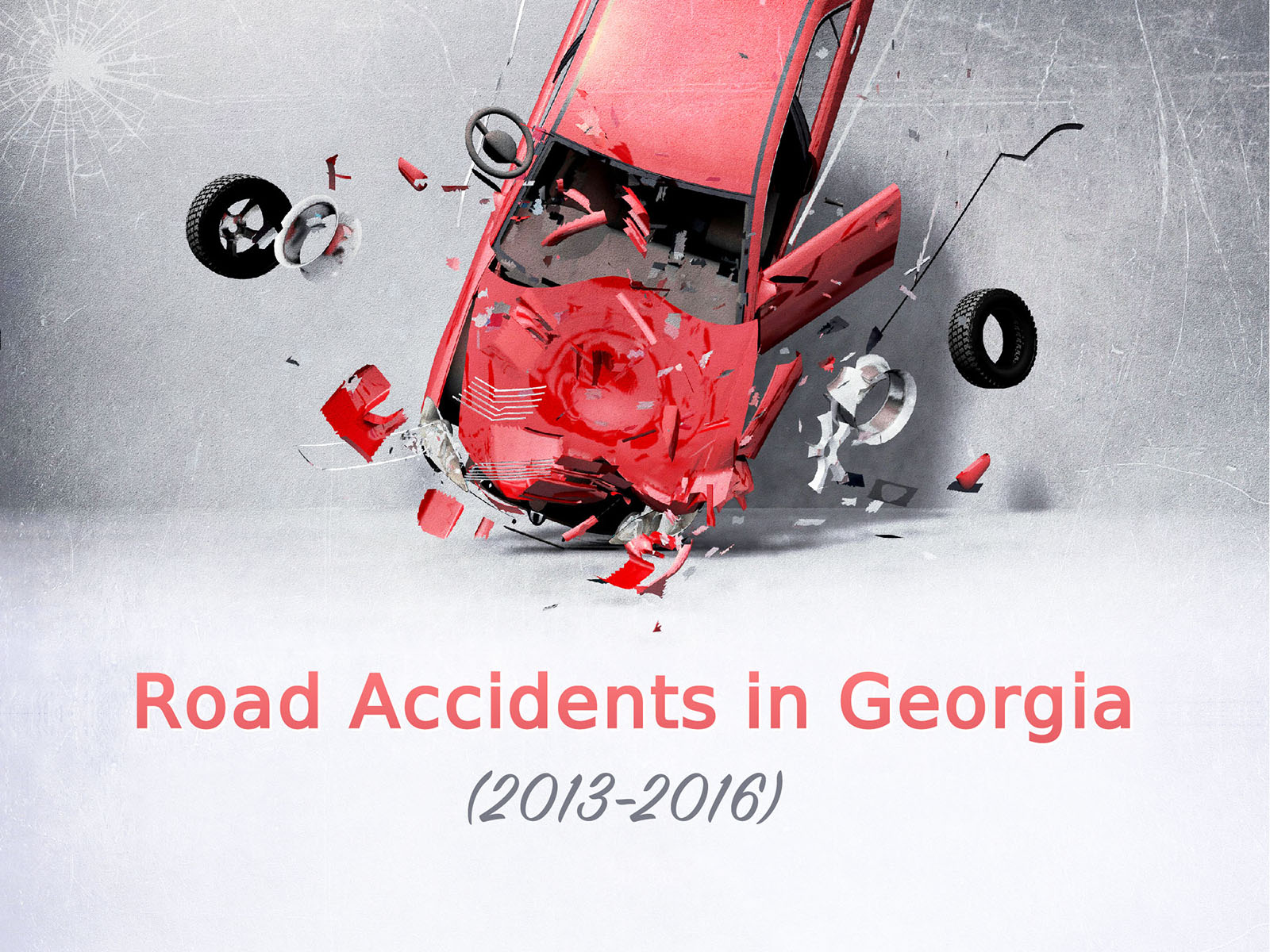
Medical Care Expenses of Patients Living in the Occupied Territories
Infographic of the key findings of the analysis - Medical Care Expenses of Patients Living in the Occupied Territories - prepared by the Institute for Development of Freedom of Information (IDFI):
In 2014-2017, 16,935,074.81 GEL was spent from state budget on the medical expenses of Abkhazian and Ossetian patients. 6,188 patients received medical services.
In 2014-2017, more Abkazians (3,595) were using state-funded medical treatment than Ossetians (2,650).
In 2014-2016, the number of patients receiving state-funded medical treatment financed by the state budget increased 2.4 times and the budgetary allocations almost doubled.
In 2014-2016 the number of patients using state-funded medical transportation increased by 50% and the the budgetary allocations almost doubled.
In 2014-2017 the number of Abkhazian patients (3,595) receiving medical treatment financed by the state budget was higher than the number of Ossetian patients (2,650). Therefore, medical expenses on Abkhazian patients were higher (9,759,689 GEL on Abkhazian patients and 8,098,078 GEL on Ossetian patients).
Patients living in the occupied territories most often refer to Georgian medical institutions in case of oncological, onhematological diseases or for requesting medicines.

Expenses on Public School Infrastructure: 2014-2017
State budget expenditure on public school infrastructure in Georgia has been declining since 2014. Over the past 4 years, this number decreased by 35%.
In 2016-2017, the largest amount was allocated to public schools located in Tbilisi – GEL 8,740,398 in 2016 and GEL 7,098,263 in 2017.
In 2016, after Tbilisi, the highest amount was spent on Shida Kartli region – GEL 4,204,636, while the lowest amount was spent on Adjara region – GEL 32,466. Similarly, in 2017, Shida Kartli region received the most amount – GEL 5,482,118, while funding for Adjara region decreased by 91% to GEL 1,727.75 compared to the previous year.
In 2017, compared to the previous year, expenditures on public school infrastructure increased in Shida Kartli, Imereti and Guria regions; Mtskheta-Mtianeti region saw no change, while all other regions had their funding decreased.
The Ministry of Education has not kept regional data on public school infrastructure expenses for 2014 and 2015.
Overall, GEL 123 million was spent on public school renovation in 2014-2017.
Expenditure on public school infrastructure is not directly proportional to the distribution of schools by regions. The largest number of public schools in Georgia is in Imereti region, followed by roughly the same number (230 to 240) in Adjara, Samegrelo-Zemo Svaneti and Kvemo Kartli. The least number of public schools (67) is in Racha-Lechkhumi and Kvemo Svaneti region.
A 2016 report by the Georgian Public Defender found that the number of public school renovations decreased by 65% between 2015 and 2016.
The same report identified cases when public schools required renovation and none was provided.

Driver’s Licenses and Vehicle Identification Marks Issued to Persons with Disabilities
The study prepared by the Institute for Development of Freedom of Information (IDFI) showed, that:
- Tbilisi City Hall and municipal administrations often do not keep separate budget records on the expenses incurred on infrastructure adaptation for PwDs.
- In 2017, there was a significant rise in the number of driving licenses and vehicle identification marks for PwDs.

Statistics on Persons with Disabilities Living in Georgia
The study prepared by the Institute for Development of Freedom of Information (IDFI) showed that the Georgian state is still unable to collect comprehensive statistics on persons with disabilities, which it has committed to under the UN Convention on the Rights of Persons with Disabilities. The key findings of the study include:
- The 2014 census showed that there were 100,113 registered persons with disabilities in Georgia, while the Social Service Agency had registered 118,651 persons with disabilities receiving social assistance as of March 1, 2015, and 125,104 in 2017.
- According to the 2014 national census, there are 5,172 children with disabilities in Georgia, whereas 2017 data from the Ministry of Labor, Health and Social Affairs suggests that there are 10,052 children with disabilities receiving social assistance.

Employment Statistics of Persons with Disabilities
The study prepared by the Institute for Development of Freedom of Information (IDFI) showed that persons with disabilities in Georgia face greater problems with unemployment and the ability to realize their potential. The key findings of the study include:
- As of 2014, of the 96,102 persons with disabilities in Georgia at the age of 15 years and older 34.4% (33,027 persons) were employed.
- 86.2% of employed persons with disabilities were self-employed, while the same figure for the rest of the employed population was 53.6%.
- As of 2014, only 4.8% - 4,571 persons were hired (as contracted employees) out of 96,102 persons with disabilities in the age group of 15 years and older.
- The employment rate for persons with disabilities declines with the status of disability. For example, only 3.8% persons with disabilities (15 and above) were employed in Group I (pronounced disability), 4.8% in Group II (considerable disability), and 7.8%in Group III (moderate disability).
- As of 2014, average PwD employment rate in EU countries is 33.6%, which is 7 times higher than in Georgia.

Asylum Seekers in Georgia: 2012-2017
IDFI visualization about asylum seekers in Georgia in 2012-2017 years.

Road Accidents in Georgia: 2013-2016

Fining Policy of the Patrol Police: 2013-2016

საჯარო ინფორმაციის ხელმისაწვდომობის უზრუნველყოფასა და პროაქტიულ გამოქვეყნებაზე პასუხისმგებელ პირთა რუკა
ინფორმაციის თავისუფლების განვითარების ინსტიტუტმა (IDFI) შექმნა სხვადასხვა საჯარო დაწესებულებაში საჯარო ინფორმაციის ხელმისაწვდომობის უზრუნველყოფასა და პროაქტიულ გამოქვეყნებაზე პასუხისმგებელ პირთა რუკა, რომელიც დაფუძნებულია IDFI-ის მიერ შეგროვებულ მონაცემთა ბაზაზე.












